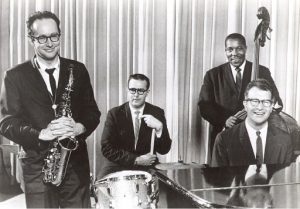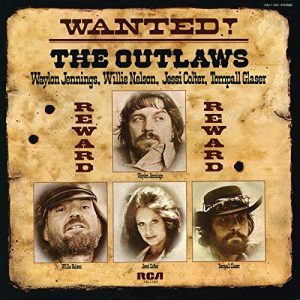
Before moving on to our “firsts” and “number ones”, we would acknowledge an event that picks up on the Music History Monday post of March 2, 2020. That postmarked the death in 1830 of the violinist and conductor Ignaz Schuppanzigh. Schuppanzigh was a loyal friend and supporter of Beethoven and his music, despite Beethoven’s often abusive fat-shaming of the admittedly zaftig violinist. Schuppanzigh participated in more premieres of Beethoven’s music than any other musician other than Beethoven himself, and his unwavering devotion to Beethoven and his music continued after Beethoven’s death. On March 23, 1828 – 192 years ago today – the Schuppanzigh String Quartet posthumously premiered Beethoven’s final string quartet: the F major, Op. 135 of 1826 in Vienna. At the time of the premiere Beethoven had been dead for just under a year: for 362 days. With this posthumous premiere, Schuppanzigh’s life-long service to Beethoven as a first performer came to an end.

On March 23, 1956 – 64 years ago today – RCA Victor records released Elvis Presley’s debut LP (long-playing) record, catalog number LPM-1254. There are 12 songs on the album, six on each side, recorded between July 5, 1954 and January 30, 1956, totaling 28 minutes and 3 seconds of music. The now-iconic photo of Elvis on the album jacket was taken during a performance at the Fort Hesterly Armory in Tampa, Florida on July 31, 1955.
The album took off like a toddler on a sugar high. It shot to number one on the Billboard Top Pop Albums chart – the first rock ‘n’ roll album to do so – and stayed there for ten weeks. It was an astonishing length of time given that both Elvis and the genre of rock ‘n’ roll were considered “untested properties” by the major record labels. Well, not after Presley’s eponymous first LP! Faster than you can say “John Jacob Jingleheimerschmidt”, the album became the first rock ‘n’ roll LP to sell a million copies.
Bless him, the King had shown that there was industrial-strength profit to be had from rock ‘n’ roll and overnight, rock ‘n’ roll went mainstream. Presley (1935-1977) made his first appearance on the Ed Sullivan Show on September 9, 1956 – 5½ months after the album was released – and the rest (as we are wont to say) is history. (For lots more on this epochal television appearance, see Music History Monday for September 9, 2019.)
Obviously, Elvis Aaron Presley was not the first recording artist to score a first, and neither was he the last. Consequently, I’ve thought to offer up some recording industry firsts and number ones, some of which surprised me as I expect they will surprise you as well.
For example, what was the first recording of concert music or opera (or so-called “classical music”, a phrase I find as useless as “compassionate meter-maid”) to sell a million copies? I would have guessed that first million-seller to have been recorded by Leopold Stokowski (1882-1977) conducting Beethoven or Rachmaninoff in the 1920s or 1930s; or Arturo Toscanini (1867-1957) conducting Mozart or Beethoven in the 1940s; or the 1955 recording of Bach’s Goldberg Variations made by Glenn Gould (1932-1982). But my guesses aren’t even close. The first million-seller concert music/opera recording was Enrico Caruso’s performance of “Vesti la giubba” (“Put on the costume”) from Ruggero Leoncavallo’s opera I Pagliacci (composed in 1893), a recording made in 1902!

So incredibly popular was Caruso’s 1902 recording of “Vesti la giubba” that he recorded it again in 1904 and 1907 for the Victor Talking Machine Company, which was the predecessor of RCA Victor. Collectively, these three recordings are among the greatest selling records of the 78-rpm era. (In a gesture that might be headlined as being “better late than never”, the National Academy of Recording Arts and Sciences awarded Caruso a Grammy Lifetime Achievement Award in 1987, 66 years after his death.)

The alto saxophonist Paul Desmond’s Take Five, as recorded by the Dave Brubeck Quartet (in which Desmond was a member) on July 1, 1959, takes home double honors. One, it was the first jazz single (that is, a 45-rpm record) to sell a million copies. (For our information, side B was occupied by Brubeck’s Blue Rondo à la Turk). Two, the Dave Brubeck Quartet album entitled Time Out in which Take Five is featured (an album released on December 14, 1959) was the first jazz LP to sell a million copies.

We must as well recognize and honor our friends in the world of country music, by noting that the first million-selling country album, titled Wanted!, was recorded by The Outlaws and released on January 12, 1976.
“The Outlaws?” you ask. “Who the freak are ‘The Outlaws’”? In fact, such a group never existed. The album is, in reality, a compilation of Willie Nelson and Wayland Jennings songs recorded by various groups at various times, tied together by their Western/cowboy themes and the faux wanted poster that is the album’s cover art. It was a case of great marketing. One of the album’s producers, Tompall Glaser, later said in an interview:
“People were so hungry for something different than what was on the radio that they just ate it up. And it sold a million in the first two weeks and it went on up to five million.”

The 12-inch LP record, rotating at 33 1/3 rpm (revolutions per minute), was introduced by Columbia Records in September 1948. (That first commercial 12-inch LP was a recording of Mendelssohn’s Violin Concerto in E minor, performed by Nathan Milstein and the New York Philharmonic, conducted by Bruno Walter; its catalog number is ML-4001.) However, it took some time for LPs – this new software – to catch on, as they required an entirely new generation of hardware (turntables capable of rotating at 33 1/3 rpm equipped with microgroove styli). It wasn’t until 1956 that an LP record sold over a million units. That record was Harry Belafonte’s third studio album, titled Calypso and released by RCA Victor (catalog number LPM-1248). The album’s popularity (31 weeks as number one on Billboard’s Top Pop Albums chart!) was due in large measure to its first track: Day-O (Banana Boat Song), which became Belafonte’s signature song.
Oh, the myriad joys of the internet! Once the information starts pouring out it’s well-nigh impossible to turn off the spigot. For example, would you like to know what are the 10 best-selling artists of all time by album sales? As of 2017, here they are:
- The Beatles: 178 million albums sold.
- Garth Brooks: 148 million albums.
- Elvis Presley: 136 million albums.
- Led Zeppelin: 111.5 million albums.
- Eagles: 101 million albums.
- Billy Joel: 82.5 million albums.
- Michael Jackson: 81 million albums.
- Elton John: 78 million albums.
- Pink Floyd: 75 million albums.
- AC/DC: 72 million albums.
(For those who need to know, Barbra Streisand comes in at #12; The Rolling Stones at #13; Bruce Springsteen at #15; and Madonna at #16.)
The single, best-selling album of all time? That would be Michael Jackson’s Thriller, with over 47 million albums sold worldwide.
The best-selling individual musician of all time, combining sales of singles, albums, videos and downloads? According to that most unimpeachable of sources, the Guinness Book of World Records, the highest-selling individual musician of all time is – right back to where we started – Elvis Presley, with sales of well over a billion, worldwide.
By comparison, the numbers of best-selling concert/opera albums are absolutely poverty-stricken. Nevertheless, let’s take a look at the top two.
Curiously, these two-best-selling concert/opera recording projects were both initially turned down by recording industry executives before they were finally produced.

At number one is Georg Solti’s epic recording of Richard Wagner’s epic, four-part The Ring of the Niebelung. The producer John Culshaw had to fight not only for the project but for his chosen conductor, the Hungarian-born Jew Georg Solti, who was considered as an “inappropriate” choice to conduct Wagner. Culshaw persevered, and the resulting set – recorded in Vienna between 1958 and 1965 – was called “The Greatest Recording of All Time” by Gramophone Magazine in 1999 and the BBC Music Magazine in 2011. Its popularity was instantaneous; when the first part of Solti’s Ring (The Rheingold) was issued, it shot to the top of the Billboard charts in May of 1959, one slot below Elvis Presley! (This amazing set, remastered to near perfection in 2012, will be featured in tomorrow’s Dr. Bob Prescribes post on Patreon.)

The second best-selling concert/opera recording also met with skepticism when it was first discussed. The plan: put on an open-air concert at the Baths of Caracalla during the 1990 soccer World Cup in Rome featuring three tenors: José Carreras, Plácido Domingo, and Luciano Pavarotti; film and record the concert and then sell VHS tapes and CDs of the event. Five major labels turned the project down before Decca reluctantly signed on. As it turned out, there was nothing to be reluctant about, as the sales went ballistic.
(Referencing my Music History Monday post of February 10, “it ain’t over until the fat man sings,” why any of those recording company honchos would pass on any project featuring Luciano Pavarotti is a mystery to me!)
Again, please join me on Patreon for tomorrow’s Dr. Bob Prescribes post, which will discuss the making of Georg Solti’s unequaled recording of Richard Wagner’s The Ring of the Niebelung.
Listen on the Music History Monday Podcast
Podcast: Play in new window
Subscribe: Apple Podcasts | Spotify | Pandora | iHeartRadio | RSS | More
